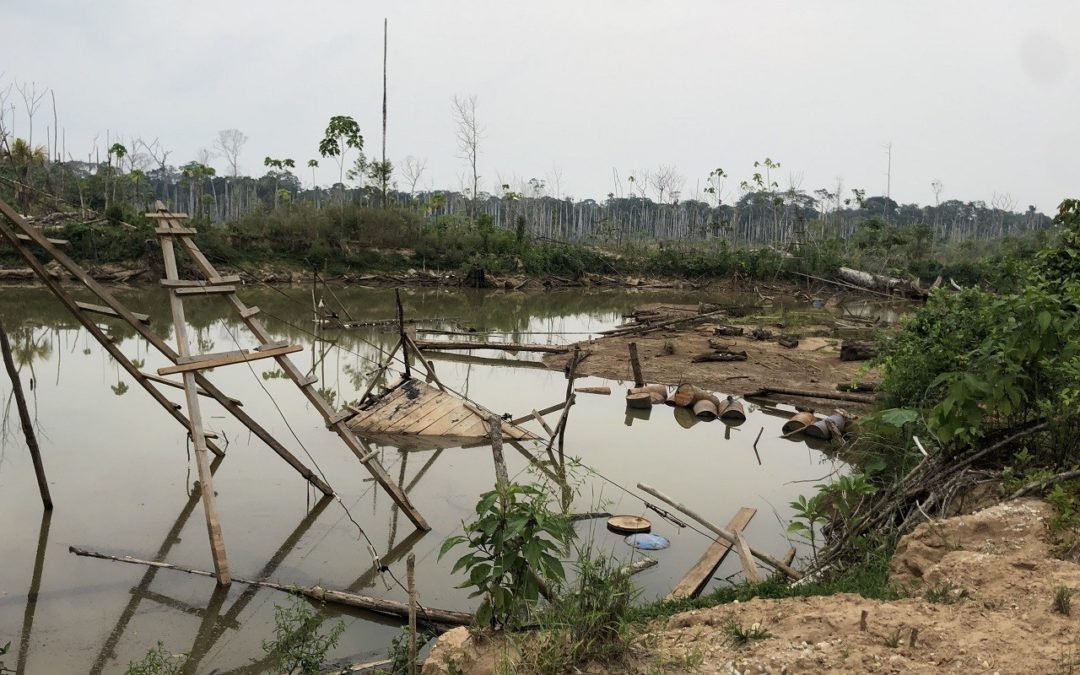SOURCE: Courthouse News Service and Science Advances
DATE: November 28, 2020
SNIP: Increased gold mining activity in Peru is leading to a dangerous ecological threat as newly dug pits have increased mercury exposure to wildlife and people, according to new research revealed Friday.
“In heavily mined watersheds, there’s been a 670% increase in the extent of ponds across the landscape since 1985. These ponds are almost entirely artificial lakes created as thousands of former mining pits fill in with rainwater and groundwater over time,” said Simon Topp, co-lead author and a doctoral student in geological sciences at the University of North Carolina, in a release.
The study was published in the journal Science Advances.
Among forested areas in the South American country, ponds and pits dot the landscape left over from the gold mining industry. These small bodies of water have low oxygen, which allows mercury — a leftover toxic chemical from gold mining processes — to be converted into methylmercury, which is even more toxic.
“Methylmercury poses especially high risks for humans and large predators because it bioaccumulates in body tissue as it moves up the food chain. That’s particularly concerning given the high biodiversity and the large number of indigenous populations that live in the Peruvian Amazon,” said Jacqueline Gerson, co-lead author and a doctoral student in ecology at Duke University.
Mercury, which can lead to death in humans and animals, is used to help separate gold ore from the soil it’s found in. The most common form of mercury poisoning in humans is the consumption of fish, though it can sometimes occur from breathing contaminated air.
Some mining operations burn the mercury off or drop it into rivers, causing an even greater risk to the surrounding communities, according to the study.
The researchers arrived at their findings by collecting samples of water and sediment near gold mining sites around the Madre de Dios River in July and August of 2019. They examined the samples for mercury content, as well as methylmercury.
“You can clearly see that the increase in artificial lakes and ponds in heavily mined areas accelerated after 2008, when gold prices dramatically increased along with mining activity,” Topp said.
“We expect that this trend, and the environmental and human health risks it causes, will continue as long as gold prices remain high and artisanal small-scale gold mining is a profitable activity,” he said.

